Learn how to repair overexposed images in Lightroom is an important ability each photographer ought to grasp as a result of it’s inconceivable to get the proper publicity with each shot.
It’s a easy and simple course of that requires you to know how publicity adjustment instruments work in Lightroom.
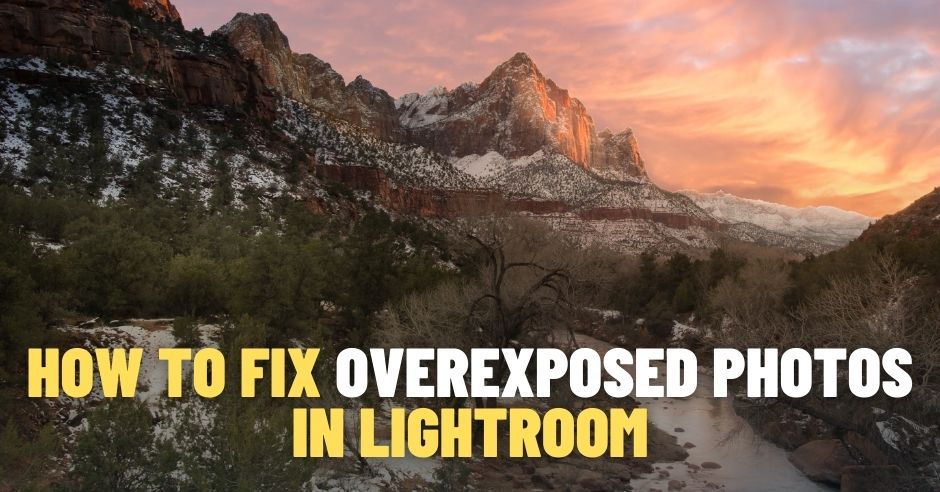
To repair overexposed images in Lightroom, you at all times begin with the Spotlight slider shifting it to the left. Subsequent, you comply with with the White adjustment, slowly dragging it to damaging values. Within the final step, you employ the Publicity slider to deliver the general publicity to the specified stage.
Understanding Publicity and Overexposer
Publicity is among the most basic ideas in pictures. Additionally it is an idea that we study on the very starting of our pictures journey.
Publicity in pictures determines the quantity of sunshine that you simply, as a photographer, allow to succeed in the digicam’s sensor. Publicity defines how shiny or how darkish your images are.
If you take images, you—together with the assistance of the aperture, shutter velocity, and ISO—have full management over how a lot gentle you enable the digicam to file. You possibly can seize the identical scene otherwise, which suggests the brightness of the images will range.
When your photograph is just too darkish, we name this “underexposed.” When the photograph’s brightness is spot on, we name this “correctly uncovered.” When the photograph is just too shiny, we name this “overexposed.”
At present, we’ll discover ways to repair, or at the very least try to repair, overexposed photos in Lightroom.
Why can we get overexposed images?
The digicam meter does a fairly good job of evaluating the precise publicity in evenly lit scenes. However as a rule, the topic we intend to {photograph} has uneven lighting. As a rule, the scenes with essentially the most complicated gentle produce essentially the most attention-grabbing and dramatic images.
For instance, when capturing sunrises or sunsets, we are able to have massive darkish areas within the shadows and very shiny areas within the sky. In these conditions, the digicam meter will get fooled and, because of this, units the mistaken publicity.
Overexposed images happen when the publicity meter assumes that the scene is darker than it truly is; it boosts the publicity and makes the picture too shiny.
For instance, right here is a photograph I took in Utah whereas climbing on the backside of a canyon. The scene is extraordinarily contrasted with the darkish areas on the backside of the canyon and the small, shiny space of the sky on the prime.
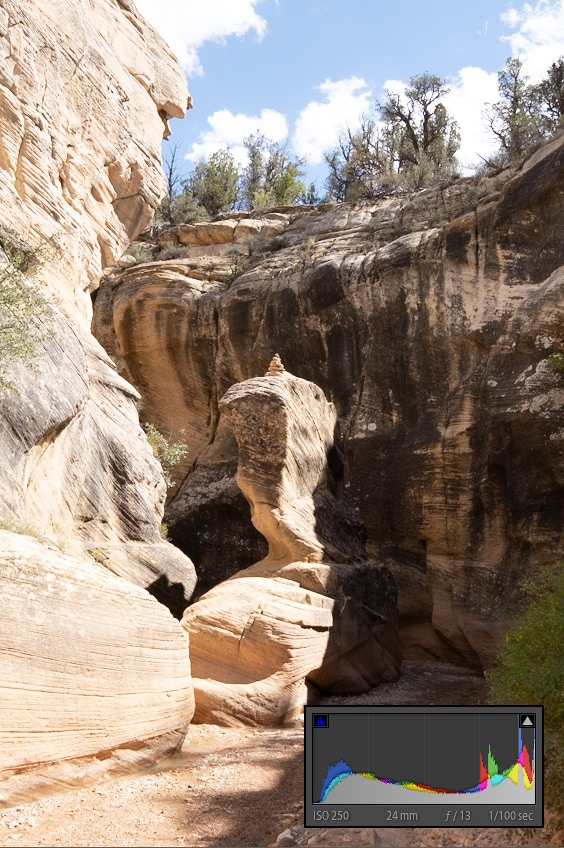
The darker space, which represents 80% of the body, fooled the publicity meter by making it imagine that the scene is just too darkish and, because of this, elevated the publicity. By doing this, it blew the world of the sky and made the photograph overexposed.
See additionally: Learn how to Easy Pores and skin in Lightroom
Overexposed images occur to all of us. We should discover ways to repair them in post-processing.
Learn how to Repair Overexposed Images in Lightroom
If you import images to Lightroom and see that a number of the images are too shiny or overexposed, one of the best ways to judge the overexposed areas of the photograph is through the use of the Histogram.
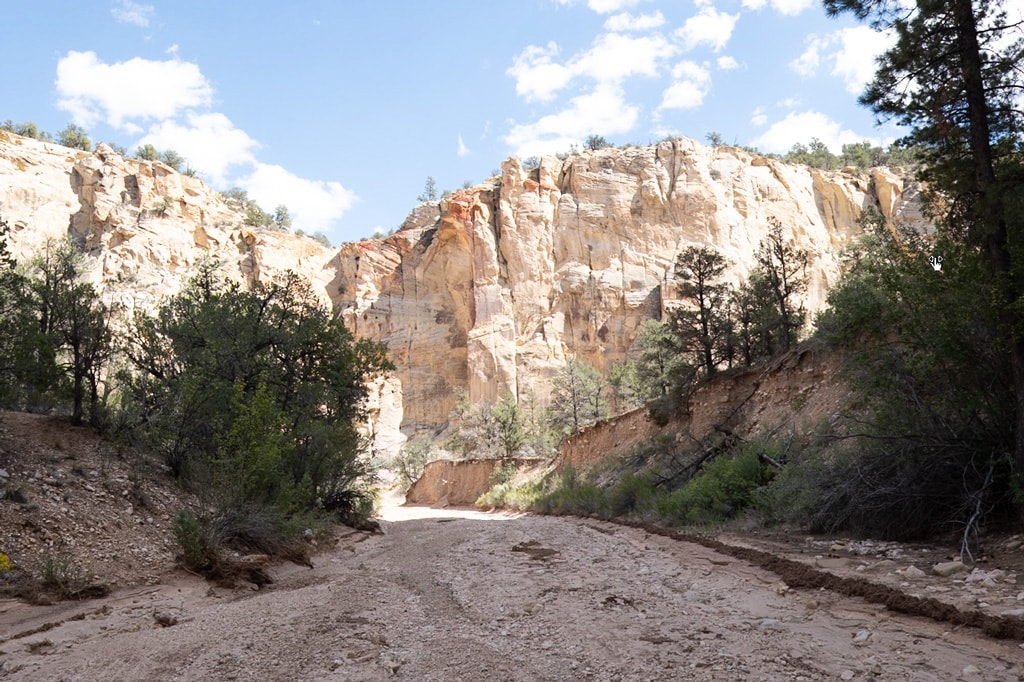
Leap to the Develop Module and open the Histogram panel from the highest proper nook if it doesn’t open by default.
Subsequent, hit the “J” keyboard shortcut to activate the Clipping Indicators.
The Clipping Indicators present the areas of the photograph which might be too shiny (highlighted in pink) and the areas which might be too darkish (highlighted in blue).
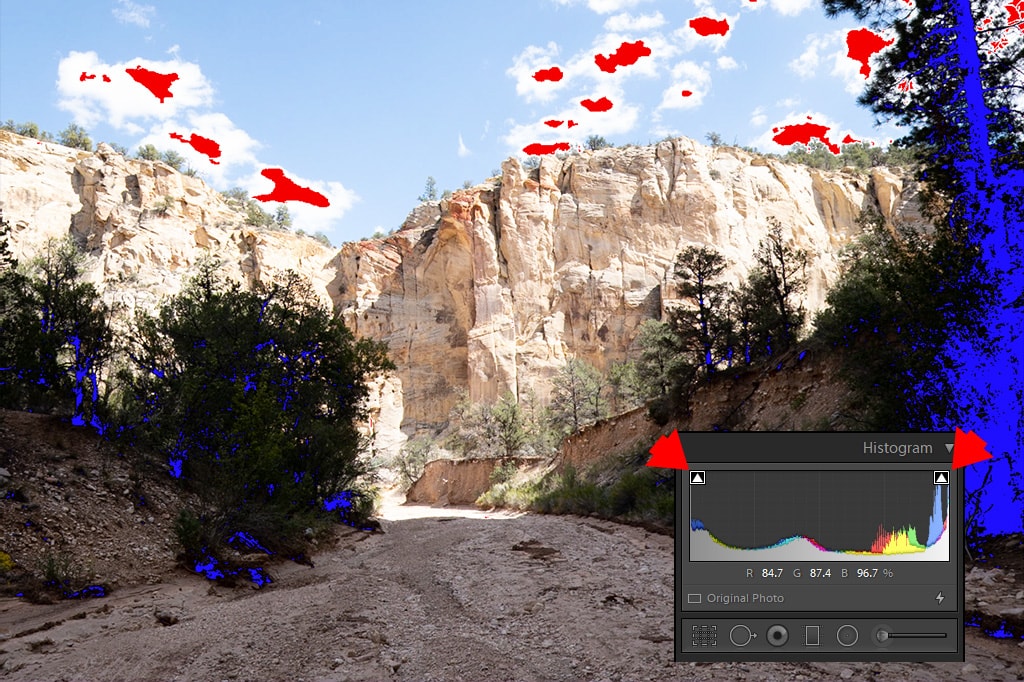
Since our objective is to discover ways to take care of overexposed images, we’ll solely focus on the pink highlights.
The pink highlights establish the areas of the picture which might be blown out. Which means the highlighted areas are pure white and do not need any info in them; because of this, they can’t be recovered.
However that is solely true for JPEG photos as a result of the Lightroom Histogram relies on JPEG photos and never RAW info. Even for those who shoot RAW, Lightroom converts the photograph to JPEG after which builds the Histogram primarily based on the JPEG model of the picture.
Which means for those who shoot in JPEG and see blown-out areas of your picture, you might be out of luck and the photograph can’t be salvaged.
Associated: How To Edit Your Images Look Like Movie
If you happen to shoot in RAW, which I at all times suggest, you continue to have an opportunity to get well the picture.
Because the Histogram shouldn’t be an correct illustration of the RAW picture, you gained’t have the ability to assess the potential for restoration by trying on the picture and its histogram. You could begin by shifting the sliders to see if restoration is feasible.
Step 1 -Get better Highlights
I at all times begin the method of recovering overexposed photos with the Highlights Slider. I drag the slider all the best way to the left till it reaches a worth of -100.
The Highlights Slider impacts the brilliant areas of the picture with out affecting the pure whites, mid-tones, and shadows.
The explanation the Highlights Slider is the simplest instrument for recovering blown images is that it has a particular restoration algorithm. If, for instance, one of many three coloration channels (pink, inexperienced, and blue) has no info resulting from overexposure, this system will try to rebuild it primarily based on the opposite two channels. In essence, it creates one thing out of nothing.
Subsequent, I consider if the Highlights changes totally recovered the overexposed areas.
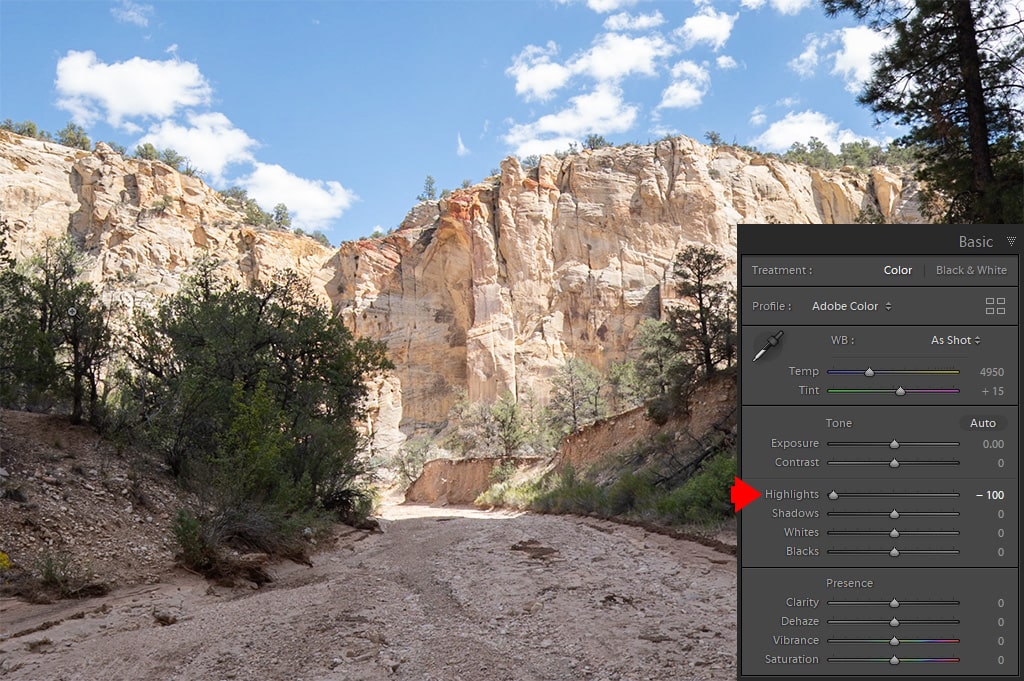
If it didn’t, I transfer to the subsequent restoration possibility.
Step 2 -Regulate Whites
The Whites Slider impacts the brightest areas of the picture together with pure white. It doesn’t have a mechanism of rebuilding coloration info.
The Whites Slider is most frequently used for setting the white level within the photos for a wider tonal vary.
See additionally: Learn how to Batch Edit in Lightroom
I drag the Whites Slider to the left till it reaches a worth of -100 and assesses if it mounted the overexposed picture.

If it doesn’t, I transfer to the subsequent instrument.
Step 3 – Stability Publicity
The Publicity Slider impacts the general brightness of the picture and tries to imitate the impact produced by the digicam’s publicity settings (aperture, shutter velocity, ISO).
For instance, you’re taking two images of the identical scene the place one is correctly uncovered and the opposite is underexposed by one cease. You import them into Lightroom and increase the Publicity by one cease within the underexposed picture. This can produce an an identical picture to the correctly uncovered picture; each photos can be indistinguishable.
I seize the Publicity Slider and begin by slowly shifting it to the left, making the picture darker.
If at this level you may see that the picture is getting darker, however the brightest areas of the pictures are nonetheless blown, this tells you that restoration shouldn’t be doable.
See additionally: Learn how to use tender proofing in Lightroom
Based mostly on my expertise, for those who overexpose a picture by one cease, the Highlights Slider will have the ability to get well the brightest areas of the picture. You possibly can steadiness the general brightness of the photograph later through the use of the Publicity Slider.
If you happen to overexposed your picture by greater than 1.5 to 2 stops, you’ll need to make use of all three instruments. The consequence shouldn’t be at all times predictable as you’ll merely need to attempt to decide if restoration is feasible.
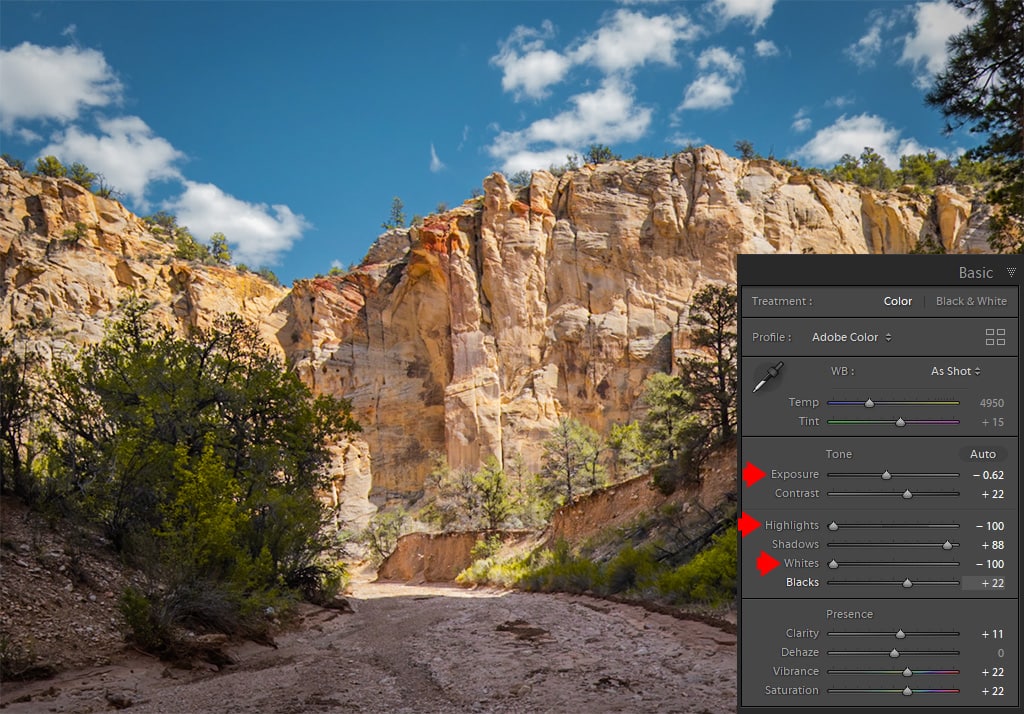
Closing Ideas
One of the best ways to keep away from overexposed images is to discover ways to use the Histogram in your digicam to at all times get the precise publicity whereas capturing.
To maximise your possibilities of recovering the overexposed picture throughout post-processing, at all times shoot in RAW format. By capturing in JPEG, you reduce the prospect of publicity correction after the very fact.
